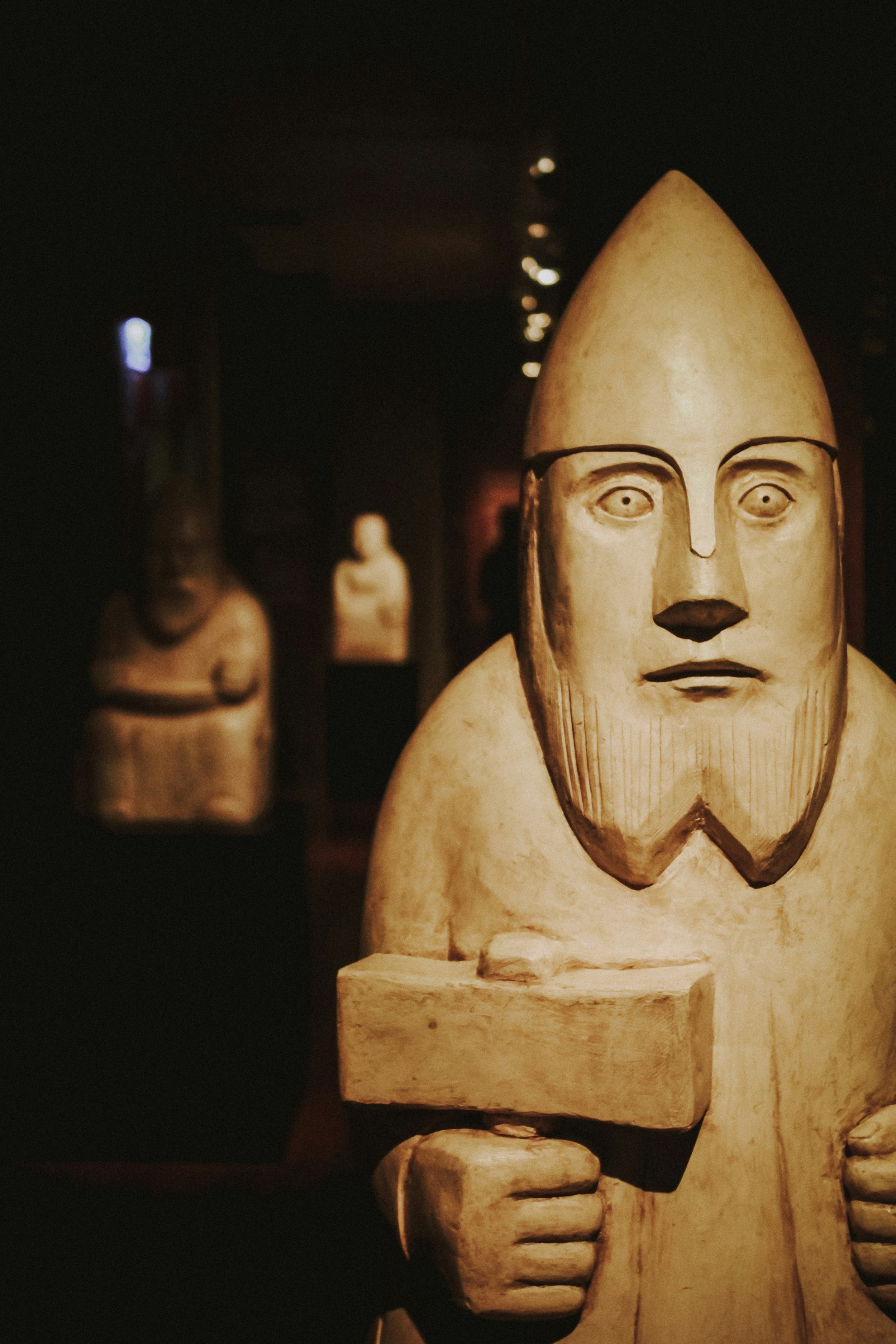From Mythology to Modernity. Six lectures exploring Scandinavian Culture, History, Fine Art, Design and Literature.
-

Day 1: Wednesday 9 April 2025
1. Viking Gods and Valkyries – The Art of Norse Mythology
After a brief introduction to the Nordic region, we explore its legends by examining over 1,500 years of Norse mythology in the fine and decorative arts. But why do we see so little of the Viking gods and goddesses in museums and yet so much of the Greek and Roman ones? The talk considers Viking-age artefacts, English paintings by Fuseli and Blake, 19th century Scandinavian works of national romanticism and modern interpretations ranging from Anselm Kiefer to manga.
-

Day 1: Wednesday 9 April 2025
2. Iceland in Three Stories
Iceland is a tiny Nordic country, out on a limb, but its literature is renowned. The island’s writers have influenced authors worldwide … and even include a Nobel prize winner, Halldór Laxness. This talk uses artworks and three great literary works - a saga, a historical novel and a crime thriller – to tell the extraordinary history of a brave nation constantly at threat from colonisers, nature and lack of resources.
-

Day 1: Wednesday 9 April 2025
3. Denmark – Re-imagining the Nation
In the 19th century, Denmark lost its territories and regional power, but produced its finest art. And it’s an absolute revelation. We end the first day by studying how artists in the Danish Golden Age of painting used landscapes to create a new national story, alluding to the country’s heroic Viking past and its agricultural future. We also look at the change in style of Danish landscape painting over the 19th century, including the plein air works of the Skagen school, and explore new ways to interpret landscape art.
-

Day 2: Thursday 10 April 2025
1. The Modern Breakthrough
The second day focuses on the rapid social and cultural changes that occurred in Scandinavia in the late 1800s and into the 20th century. The first talk covers the ‘Modern Breakthrough’ in art, design and literature in Norway, Sweden and Finland: the turn to realism, formal experimentation and the exploration of psychological states. We look at the extraordinary paintings of Helene Schjerfbeck, Hilma af Klint and Edvard Munch, the writers Ibsen and Strindberg, and finally the design reforms of Carl and Karin Larsson and Ellen Key, inspired by Britain’s William Morris.
-

Day 2: Thursday 10 April 2025
2. Scandinavian Modern – Behind the Scenes
The Nordic region is famous for its Mid-Century Modern furniture and housewares, and their beautifully simple, organic designs. But how did the Scandinavian Modern movement come about? And why did supposedly affordable products become so covetable and expensive? It’s an extraordinary tale of social engineering, scientific experimentation and international politics. This talk features the best of Swedish, Finnish and Danish design from 1930 to 1960, examines its legacy today, and reveals why everything in IKEA is not as it seems.
-

Day 2: Thursday 10 April 2025
3. Case Study: Finn Juhl – Fall and Rise
The day ends with an in-depth look at Denmark’s architect and designer Finn Juhl. In the 1950s he was an international celebrity, but by 1980 he was virtually unknown. Today his works are highly prized again. The talk peeks behind the teak to explain why Juhl’s designs remain so important … and asks what we can learn about the vagaries of artistic fame from his reversals of fortune. The day ends with recommendations for further reading and suggestions for places to visit in the UK and Scandinavia to learn more about Nordic art and design.
Our speaker
James Vaux
James is an Oxford graduate and former lawyer and banker. He lived and worked in Scandinavia as Head of the Nordic Region for the international bank Rothschild, advising governments and corporates across the region. James is now a researcher and lecturer in Nordic culture and history. He holds an MA in Scandinavian Studies from UCL and studied design at the Inchbald School and Mid-Century Modern at Sotheby’s Institute. He specialises in Modernism, the Viking Age and 19th century paintings.